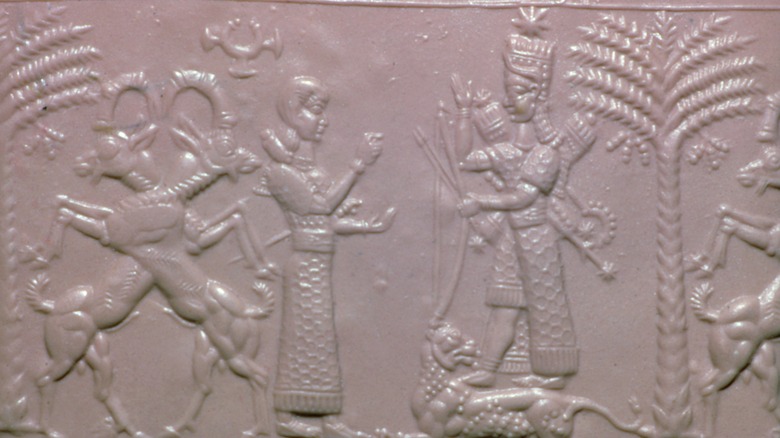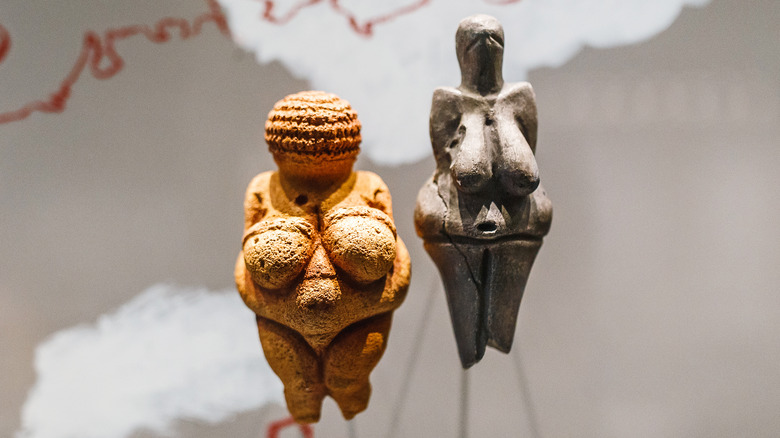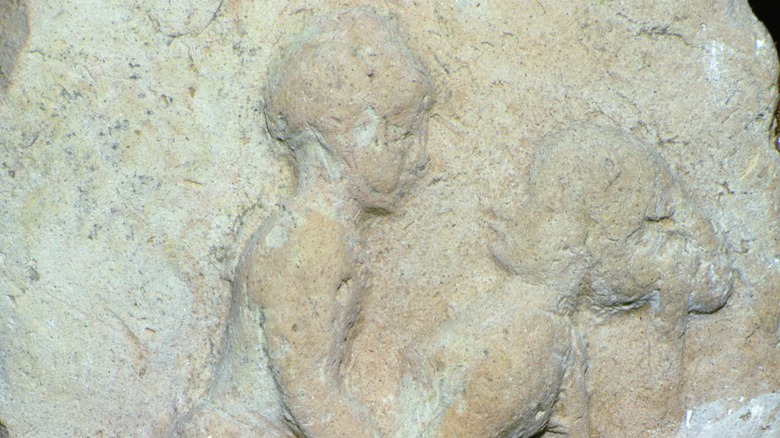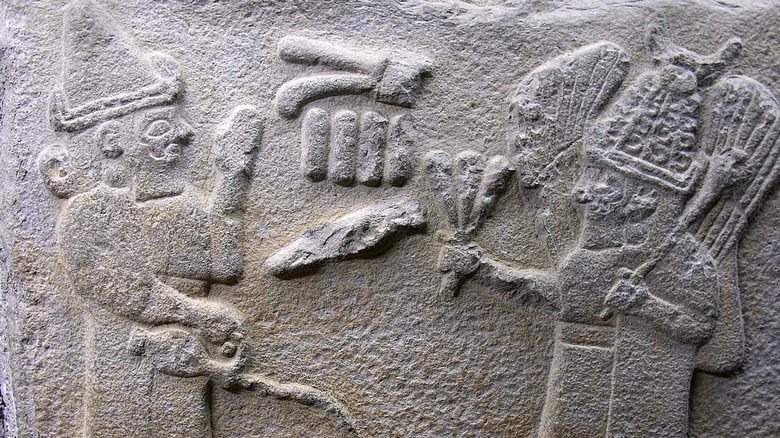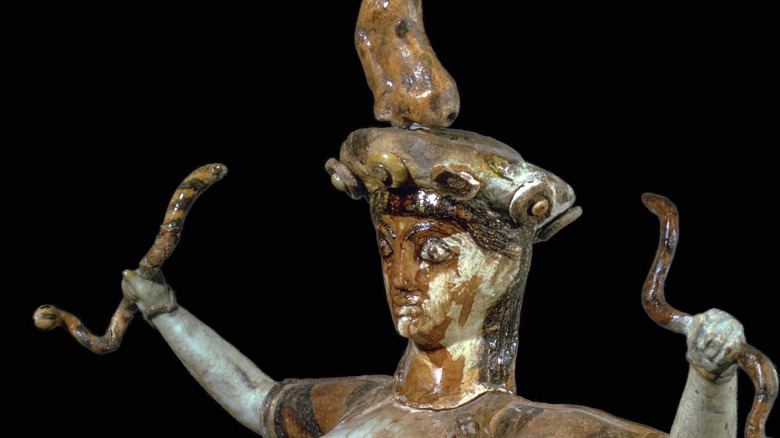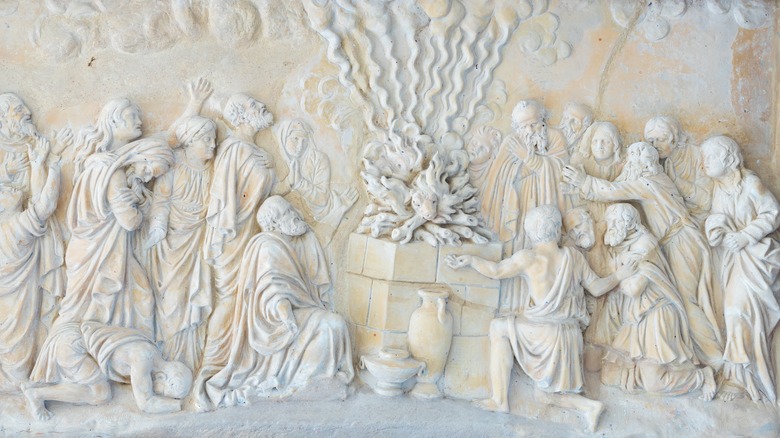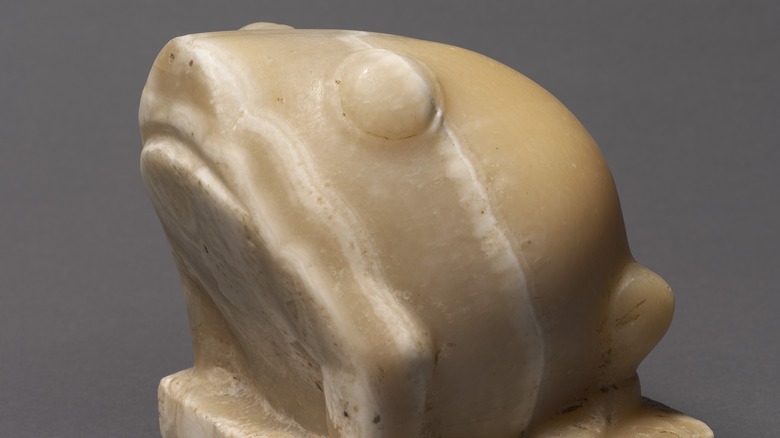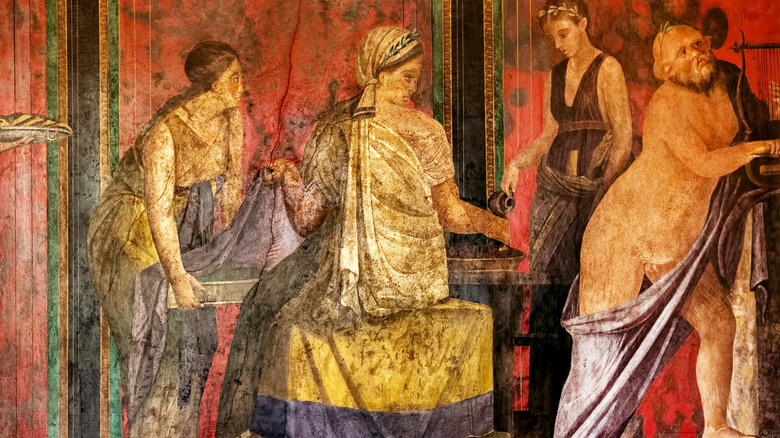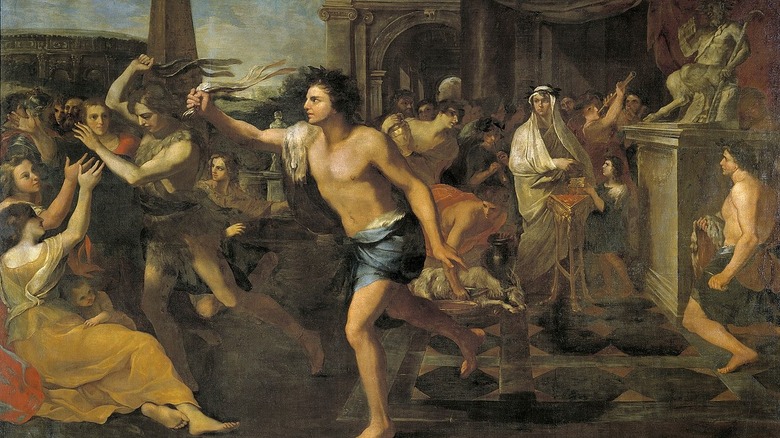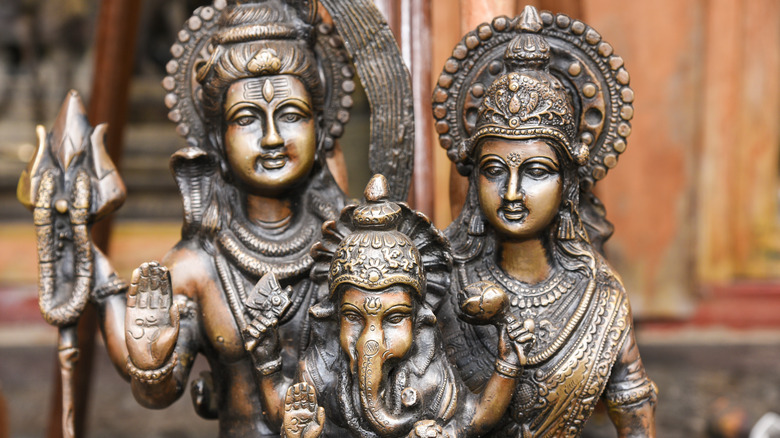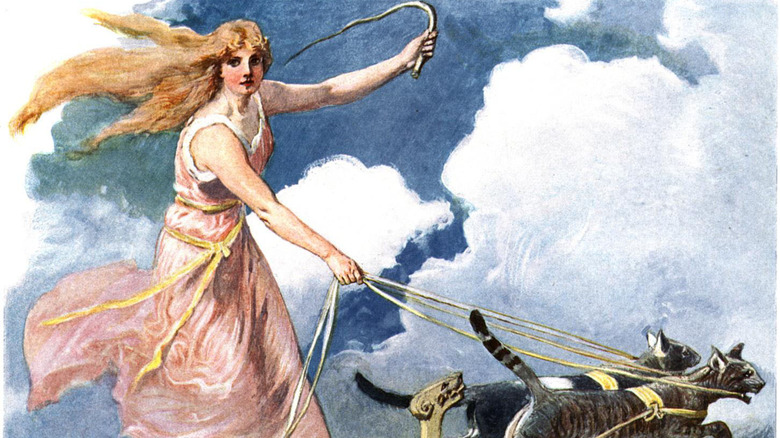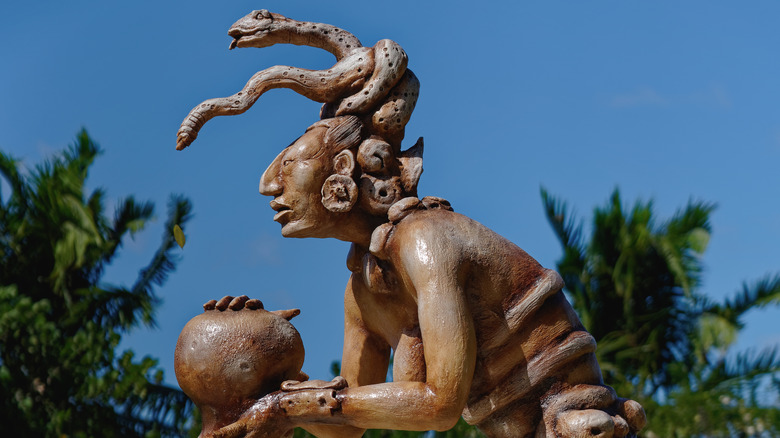Ancient Beliefs Of Fertility Gods And Goddesses Explained
You may not realize it, but if you enjoy hunting Easter eggs and eating chocolate bunnies, you are taking part in a long line of fertility beliefs and practices which can be traced back to ancient days. Fertility, or reproductive capacity, was a major concern for ancient people, both in terms of human childbirth and producing the food necessary for survival. To promote these critical elements of human life, fertility religions emerged.
Take, for example, the egg: For obvious reasons, it was and continues to be widely viewed as a symbol of rebirth. As such, it has been used since prehistoric times, with a relatively modern iteration being the Easter egg, which to Christians represents the rebirth of Jesus Christ. The same is true for rabbits, whose remarkable ability to procreate has led them to naturally become a traditional fertility symbol.
What is remarkable about these twin aspects of fertility and agriculture is that they universally appear in every ancient belief system, and are typically represented by gods and goddesses. Where ancient religions differ is in the details, so let's take a look at some of the most prominent beliefs and practices associated with these ancient fertility deities, and consider how they inform the world today.
Early fertility figurines
The earliest evidence of fertility beliefs dates to statuettes found from the Paleolithic period in parts of Europe and Asia. These objects, made of mammoth ivory, antlers, teeth, stone, or other materials, have been dated to up to 42,000 years ago. All are carved in the likeness of well-bosomed, curvy female figures, and are quite small, with the largest being roughly 9 inches.
These artifacts have been dubbed "Venus figurines," named anachronistically after the famous Roman goddess of love. Archaeologists believe the figurines to be connected to fertility practices for several reasons. The statuettes are all carved as women with large breasts, pregnant bellies, and soft curves, which give the appearance of a woman bearing or able to bear a child. In addition, some statuettes have been found anointed with red ochre, which implies menstruation — this was connected to fertility by the ancients since the missing of a menstrual cycle may signal pregnancy. This evidence suggests that these prehistoric people practiced a fertility cult with the figurines serving as mother Earth goddess-type idols or amulets.
While these are the leading theories, it is important to note that the full truth will likely not be known since there is only the archaeological record to go by, which predates writing. Therefore more speculative ideas exist, with other experts suggesting that these figurines may have been dolls, or art in the likeness of ideal beauty, or even Stone Age pornography.
The Mesopotamian fertility deities
The first fertility religions with a somewhat solid written record are found in Mesopotamia — roughly the area of today's Iraq. What we know of these comes from a combination of archaeological remains, as well as the world's first writing system developed in Sumeria.
The first fertility goddess for the Sumerians was named Innana, which by 2300 BCE, had transformed into the name Ishtar. It was with this later Akkadian name and even later worship by the Babylonians that made her famous. She was one of the most important of goddesses, being a figure associated with not only love (and thus fertility), but also war and the heavens. Physically, the goddess was thought to be the planet Venus.
The main ritual associated with Ishtar was the so-called "sacred marriage," based on the myth of her union with a shepherd named Dumuzi. After their marriage, Dumuzi died and was reborn as an agricultural god, thus becoming another kind of fertility deity. It has been speculated by some scholars that during the ritual, there would be reenactments of sexual acts as part of the rites, usually involving the priestess of Ishtar having intercourse with the king of the city. There are also analyses indicating that the Ishtar cult may have practiced temple prostitution as a divine act, where supplicants visiting the temple would have ritual intercourse with the priestesses. However, these theories have been criticized, and it is now questionable if there were literal sexual acts, or if they were symbolic descriptions.
Hittite fertility beliefs involved pits
Like other Bronze Age civilizations, fertility gods played a large role in Hittite beliefs. There were several deities, including Telipinu, who was responsible for agriculture, and the goddess Sauska, whose domain was also the soil. Sauska was also responsible for the fertility of women, and was considered an analog to the Babylonian Ishtar. This touches on an important point about the polytheistic religions of the ancient Mediterranean and southwest Asia — people from different civilizations often saw their gods as interchangeable. That is, the god or goddess was the same, but changed names between cultures.
There are, however, different rituals. The Hittites and neighboring Hurrians, for example, employed ritual fertility pits. "Round Trip to Hades in the Eastern Mediterranean Tradition" describes how they dug pits to use as a necromantic medium to commune with the underworld. In order to appease the gods, and also to ensure the fertility of the Earth, animals (mainly piglets) were sacrificed. The animals' blood was smeared along the pit walls and also used to daub idols to the gods. In this way, they believed, the world is renewed, purification occurs, and evil is kept in check in the underworld.
[Featured image by Dennis Jarvis via Wikimedia Commons | Cropped and scaled | CC BY-SA 2.0]
Minoan fertility practices involved a snake goddess
Crete was the center of the Bronze Age Minoan civilization, which many scholars believe had a fertility cult based on bulls and a snake goddess. As with other ancient civilizations, much of what we know about the Minoans is based on the work of archaeologists, who discovered it at the start of the 20th century. Minoan art and artifacts often featured voluptuous female figures, which have been compared to the paleolithic Venus figurines as representing an Earth mother goddess. Among these, one type of figure stands out — a bare-breasted female figure holding snakes in her hands. Dubbed the snake goddess, it is believed she was worshipped between 3,000 to 1,100 BCE.
Another feature of Minoan art is the frequent appearance of bulls, including depictions of the sport of bull-leaping. The exact nature of the role of bulls in Minoan religion is still hazy, but bulls often feature in fertility religions, so it has been theorized that Minoan may have had a prominent one. This view, however, is not shared by all scholars. Stephanie Lynn Budin points out in "The Ancient Greeks: New Perspectives" that none of the female figures are pregnant, nor are they shown with children. Also, these various figures may in fact be different goddesses, rather than one Earth mother. If scholars finally decipher Linear A, the Minoan writing system, the truth of their fertility beliefs may be finally uncovered.
Fertility beliefs of the Semites
The Semites were a broad and mixed assortment of peoples that lived around the Mediterranean and in southwest Asia, united predominantly by a language of shared origin. These included Canaanites, Phoenicians, Akkadians, and the ancient Hebrews, although this latter group was famously monotheistic. Fertility worship among many Semites centered around two deities: Baal (sometimes Ba'al) and Asherah, both of whom appear in the Hebrew Bible — Baal in particular features in the conflict between his priests and the prophet Elijah.
Baal was an important fertility god and was believed to have struggled against Mot, the death god, in seven-year cycles. If Baal won, there would be seven years of plenty. If he lost, then there were seven years of famine and drought. Asherah was a mother goddess figure who was sometimes designated the consort of Baal, and worship of the goddess seemed widespread. Asherah was worshipped by at least some of the less-monotheistic Hebrews as the wife of their god, Yahweh.
The Canaanites, in particular, have been linked with holding orgiastic fertility rites ceremonies which celebrated the union of Ba'al and Asherah, according to "Of Wood and Stone" by Elizabeth C. LaRocca-Pitts — ascribed activities have also included child sacrifice and cultic prostitution. However, it is uncertain what the reality of such ceremonies was, since much of what has been assumed has come from the Hebrew Bible, which maligns the worship of Baal.
Egypt, the Moon, and frogs
Fertility beliefs also encompassed the moon, with many ancient societies believing that it had an integral role in reproduction. The ancients linked the moon and fertility because it was believed that the lunar cycle influenced the menstrual cycle. This is seen clearly in Egyptian beliefs, with one prayer from "The Ancient Egyptian Book of the Moon" reading that the moon "...causes bulls to rut, impregnates cows, grows the egg in the womb."
Egyptian society was seriously concerned about fertility, and to promote it not only honored the moon but a wide variety of gods and goddesses, such as Hathor and Min, sometimes represented by worn amulets. One such goddess was Heqet, who had the head of a frog (via Zachary Gray's "The Intrepid Wanderer's Guide to Ancient Egyptian Goddesses"). Despite the mashed-up look, Heqet was considered to be a sensual goddess and associated with procreation, since frogs do make many tadpoles, and even thought to give all humans their life force. As a result, ancient Egyptian women wore an awful lot of frog amulets.
The Greek fertility festivals
The religion of the ancient Greeks had several fertility gods and goddesses, but two in particular had special rituals associated with them, one of which was Demeter, the goddess of agriculture. In October of every year, there was a multi-day festival called the Thesmophoria, during which married women carrying pinecones (a symbol of fertility) mixed the seeds of the cones with the rotted remains of piglets, which had been sacrificed into a pit several days before. According to Max Price's "Evolution of a Taboo," much like the Hittites and other ancient civilizations of the Mediterranean, piglets as a sacrifice were seen by the ancient Greeks as a form of purification. The pig remains, seeds and all, as well as dough figures, were then cast into the pits. This was all supposed to ensure the fertility of the Earth, and it was so infused with symbolism that it appears even the ancient Greeks had difficulty in explaining its meaning.
Another important Greek deity associated with fertility was Dionysus. Dionysus was the god of wine, but was also associated with male fertility, and so the symbolism surrounding this god often featured phalluses. He was also accompanied by lesser gods and goddesses, such as satyrs and the Maenads, which themselves promoted fertility. In many of the myths surrounding Dionysus there are gender changes, and the rituals have often been described as having wild, orgiastic qualities since they were meant to remove constraints from people — much like wine.
The Romans smacked women with goat thongs
The Romans shared many of the same gods and beliefs as the ancient Greeks, but there were some differences — particularly in fertility rituals. One such ritual in Rome was the Lupercalia: As described by Britannica, it was celebrated on February 15, partially in honor of the fertility god Faunus, and partially in honor of the founders of the city — Romulus and Remus — and was run by a group of priests called the Luperci. After a round of animal sacrifices, two young men approached the altar for a creepier ritual; their foreheads were smeared with sacrificial blood, then the young men laughed (as they were supposed to) while the priests wiped away the blood with milk-soaked wool.
After this, a feast was held, followed by the Luperci taking thongs from the sacrificed animals and running around the Palatine Hill, smacking any women in their way with the thongs. This, they believed, would render the women fertile.
While this celebration ceased upon the orders of the Church in 494 CE, it is speculated that it may have been purposefully replaced by St. Valentine's Day, which occurs the day before. It may be a relief to modern people to know that flowers and chocolates for a loved one will now usually suffice, rather than thwacking them with a goat thong.
In China fertility gods went local
Traditional Chinese beliefs have several fertility gods, and the chief one among them is Sheji , whose name literally means "soil (She) and grain (Ji)." Originally, mythical Chinese emperors worshipped just the soil god "She," but during the Zhou Dynasty, this worship began to include both deities under the name Sheji. Eventually, the two were personified as a single goddess.
Ceremonies for Sheji were held in the open at an altar, which became one of the icons representing the state. Because of this, only the emperors were allowed to preside over the ceremonies. The altar itself had five soils of different colors, with each color representing a different direction. For example, white was for the west and red for the south. The origin of this color coding scheme started with the Zhou emperors, who gave various warlords different clumps of colored soil for them to establish their own Sheji altars. However, only the emperor's altar had all five.
Because the state monopolized fertility worship, local people sought a different way of seeking divine intervention to ensure fertile lands. Organically, people adopted other gods like Hou Ji, who served as an agricultural god that people were authorized to worship, or they ascribed fertility powers to their local god known as a Tudi Gong, meaning "Earth God." These gods were deities local to a specific place, be it a village, street, temple, or even a bridge, and were given unique characteristics by the local inhabitants.
[Featured image by ScareCriterion12 via Wikimedia Commons | Cropped and scaled | CC BY-SA 4.0]
Indian fertility beliefs still center around Parvati and Shiva
Practiced by over one billion people in the present, Hinduism is an ancient religion that can trace its origins back over four thousand years, and Hindus still honor Parvati as being one of the central fertility goddesses. In art, the goddess is typically represented as an earth mother figure who is an icon of fertility, and an ideal of beauty in India.
Parvati is often worshipped with the god Shiva, who was a devoted husband to Parvati. Shiva was originally married to Sati, but her father, the god Daksha, disapproved of the marriage and decided to insult Shiva by having a sacrifice to all the gods except him. Sati was outraged and threw herself on the sacrificial fire, which drove Shiva to create demons who beheaded Daksha and generally ran amok. Shiva was finally talked into stopping when the other gods appealed to him, so he brought Daksha back to life with the head of a ram. Sati in turn was then reincarnated as Parvati, and she married Shiva — their son was the famous elephant-headed god, Ganesha.
Today, the story of Shiva and Parvati is celebrated annually in the Sheetal Shasti (also Sitalsasthi), or "Divine Wedding." Held in late May, this religious festival features processions, music, and has a carnival atmosphere that attracts tourists. It ultimately honors the marriage of these two gods with reenactments of their union.
Norse fertility beliefs focused on two siblings
Ancient German and Norse mythology focused their fertility worship on the twin siblings, Freyr and Freyja. Freyr was the god of agriculture as well as sexuality. He apparently had great prominence due to a number of places named after him, while his sister, Freyja, served as an object of desire in the mythology. She apparently had some style, since she rode in a carriage drawn by cats and selected fallen warriors to go to Valhalla. Most of the myths surrounding Freyja focus on her sexuality.
An interesting aspect of these siblings is that in Norse mythology they were not one of the Aesir gods (think Odin and Thor), but rather one of the earth-centered clan of gods known as the Vanir (per World History. While not as well known today, during the days of the ancient Norse, both Freyr and Freyja had an extensive cult built around them, according to Anders Andrén's "Old Norse Religion in Long-term Perspectives." Not much is known about the cult's practices, but it seems to have been bound up with the concept and process of death. Thus, to the Norse, life and death were part of one universal and unending cycle, of which fertility and birth are a crucial part.
The Mayan fertility goddess was the consort of the sun
The ancient Mayans of Mesoamerica worshipped Ix Chel as their divine source of fertility. According to "The Ancient Maya," this goddess, sometimes called Chak Tel, was their most preeminent goddess, based on the numerous shrines archaeologists have explored.
Her role in Mayan mythology was as the consort of the sun, and was associated with human fertility, specifically childbirth and pregnancy. As the sun's consort, she was known as "Lady Rainbow," though she had several aspects depending upon what she was called for. Her male counterpart was responsible for the fertility of the land, personified in the god Ah-Mu– the "maize god" — who was often in battle with the god of death and depicted as young and virulent. He is recognizable in Mayan art by the mark of corn on his headdress.
Sadly, although it is evident from temple and archaeological remains that the Mayans held ceremonies for these gods, little is known about how these activities were conducted: Almost all records, including oral traditions, were erased soon after Europeans arrived in the 1500s.
